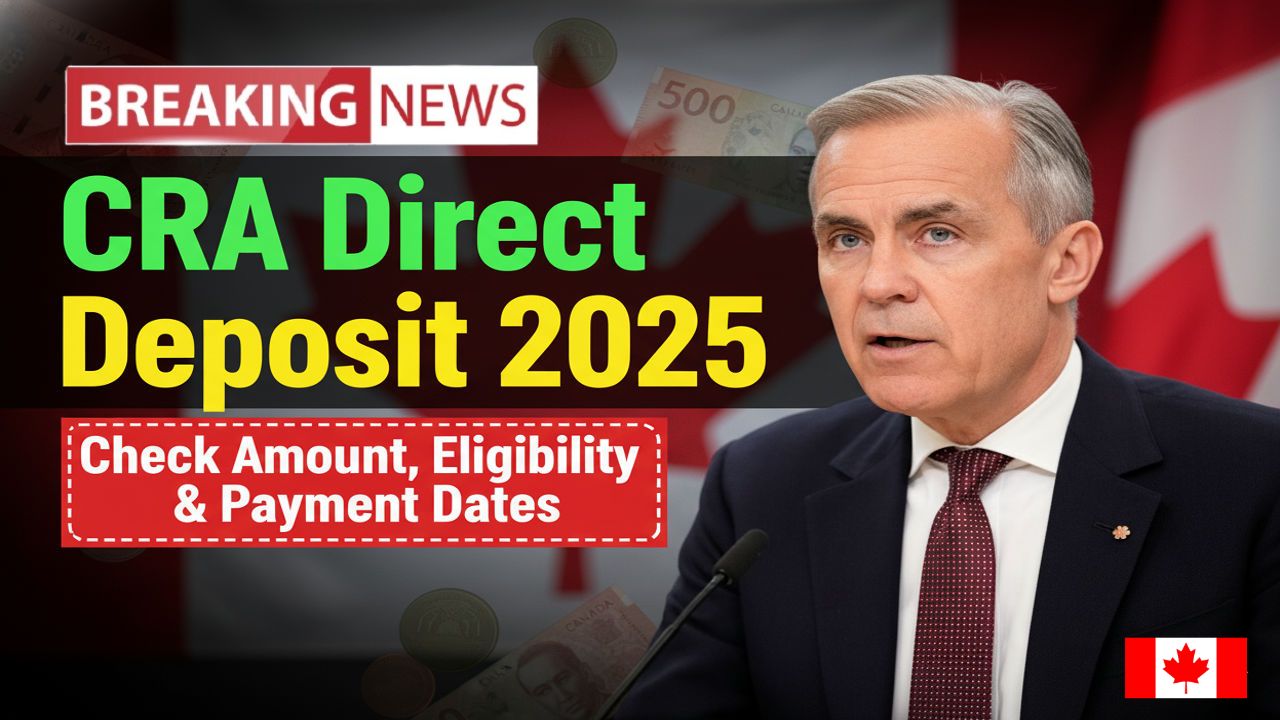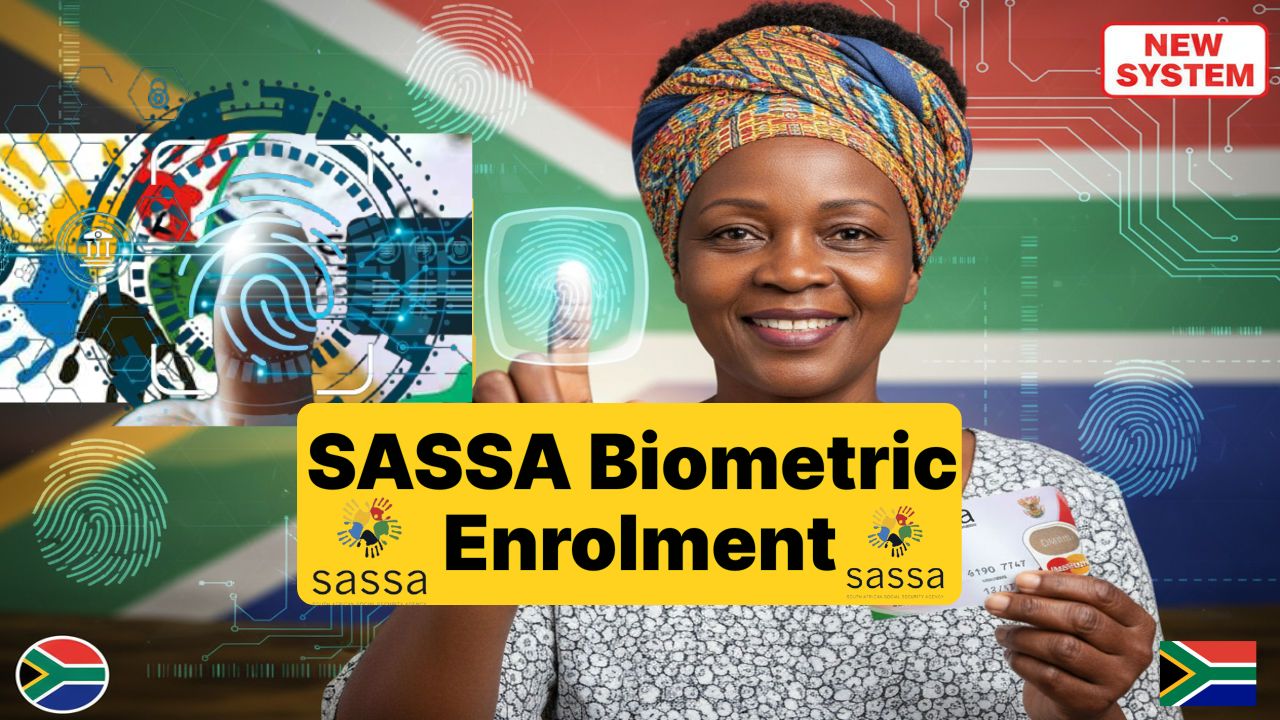CRA Direct Deposit delivers federal government payments straight to your bank account safely and quickly. In 2025 it remains the fastest way to receive tax refunds, benefits, pensions, and credits without waiting for paper cheques. This guide explains what payments are included, who can enroll, exactly how to set it up, how to verify your payment dates, and how to avoid common delays.
CRA Direct Deposit 2025 Quick Summary
Item |
Details |
|---|---|
Program |
CRA Direct Deposit for individuals |
What you receive |
Tax refunds, Canada Child Benefit, GST or HST credit and related payments, Old Age Security, Guaranteed Income Supplement, Canada Pension Plan, Employment Insurance, Canada Workers Benefit, student grants and loans, some disability and income supports |
Cost to enroll |
Free |
Processing speed |
Funds are deposited on the scheduled payment date for your program |
Who can enroll |
Most Canadian residents receiving federal payments to a Canadian bank account |
How to enroll |
Online via CRA My Account or your financial institution, by phone, by mail, or in person at Service Canada for certain benefits |
What you need |
SIN, bank name, transit number, account number, and the payment type you want to set up |
Official site link |
What CRA Direct Deposit Covers
Direct deposit is the delivery method for most federal payments managed by the Canada Revenue Agency or Service Canada. Common items include
- Income tax refunds and tax reassessments
- Canada Child Benefit and related provincial or territorial child benefits administered by CRA
- GST or HST credit and related climate or quarterly payments where applicable
- Old Age Security and Guaranteed Income Supplement
- Canada Pension Plan retirement, disability, and survivor benefits
- Employment Insurance regular and special benefits
- Canada Workers Benefit advance payments where eligible
- Government annuities, some disability supports, student grants and loans disbursements, and pay or pensions for federal public service workers in specific programs
If you already receive any of these, switching to direct deposit removes postal delays and reduces the risk of lost or stolen cheques.
Who Can Enroll
You can enroll if you
- Have a valid Social Insurance Number
- Have a Canadian bank account that accepts direct deposits
- Are receiving or expect to receive a federal government payment listed above
- Can provide accurate identity and banking details
Most newcomers, students, seniors, families, self employed taxpayers, and seasonal workers can enroll as soon as they have a qualifying payment and a Canadian account in their name.
Information You Need Before You Enroll
- Social Insurance Number
- Bank name
- Branch transit number
- Institution number if prompted
- Bank account number
- Contact details that match your CRA or Service Canada profile
- The payment type you want to enroll for
Tip. Have a void cheque or a direct deposit form from your bank. This helps avoid transposed digits that can delay your first deposit.
How To Set Up CRA Direct Deposit
1) CRA payments such as tax refunds, CCB, GST or HST credit, and CWB
- Online through CRA My Account. Sign in, choose direct deposit, enter your banking details, and save.
- Through your financial institution. Many Canadian banks allow you to set CRA direct deposit from within online banking.
- By mail. Complete the Canada direct deposit enrollment form and mail it to the address on the form.
- In person assistance. Some banks and community clinics can help you submit the details online.
2) CPP and OAS including GIS
- By phone with Service Canada using the standard toll free numbers listed on Canada.ca.
- By mail using the direct deposit enrollment form for CPP or OAS.
- In person at a Service Canada office if you prefer face to face support.
3) Employment Insurance
- Online during your EI application or after approval.
- By phone using the EI enquiries line.
- At Service Canada if you need assistance.
4) Student grants and loans
- Follow the direct deposit instructions in your student aid portal. Provinces and territories may coordinate banking details with the National Student Loans Service Centre.
5) Disability and other supports
- Use the contact route for your specific program. Many programs use Service Canada for direct deposit capture.
Payment Timing And How To Check Dates
Direct deposit posts on the scheduled date for your specific program. Examples
- Tax refunds post once CRA finishes assessing your return
- CCB and GST or HST credit follow monthly or quarterly calendars
- OAS and CPP pay on posted monthly dates
- EI typically pays every two weeks once reports are filed and approved
To confirm your next date
- Check the payments calendar in your CRA My Account or the program page on Canada.ca
- Review recent letters or emails from CRA or Service Canada
- Ask your bank about pending deposits if your program shows issued status
If a deposit is late, first verify that your account details in CRA or Service Canada match your current bank account and that there are no holds or identity reviews on your file.
Security And Fraud Prevention
- Only provide banking details through CRA My Account, Service Canada, your financial institution’s secure portal, or official phone numbers found on Canada.ca
- CRA or Service Canada will not request passwords or full card numbers by email or text
- Enable two factor authentication on CRA My Account
- Update your address, email, and phone if they change so alerts reach you
- If you suspect fraud, report it to your bank immediately and contact CRA or Service Canada using the numbers on Canada.ca
How To Update Or Switch Bank Accounts
- Log in to CRA My Account or the relevant Service Canada portal and update the new account
- Confirm the change saved correctly and note any cut off dates before your next scheduled payment
- Keep the old account open until you see the first successful deposit in the new account to avoid returned funds
Troubleshooting And Common Delays
- Incorrect digits. A single wrong digit in the transit or account number can cause a returned deposit. Double check the numbers.
- Name mismatch. The name on the bank account should match the name on your CRA or Service Canada file.
- Identity review. Random or triggered reviews can pause payments until you confirm identity or income. Respond quickly to letters.
- Closed account. If your account was closed, update details right away to prevent returned funds and mail delays.
- Joint accounts. These are usually fine, but ensure at least one holder is the benefit recipient and that the names match the benefit record.
Best Practices To Avoid Missed Payments
- Enroll in direct deposit as soon as you are eligible
- Keep a small buffer in your budget in case of program holidays and weekends
- Set calendar reminders a few days before expected deposits
- Save copies of confirmation screens and reference numbers after you update banking details
Frequently Asked Questions
1. Who can enroll in CRA Direct Deposit 2025
Any Canadian resident who receives or expects to receive eligible federal payments such as tax refunds, benefits, pensions, or credits, and who has a Canadian bank account.
2. Is there a fee to set up direct deposit
No. Enrollment is free whether you set it up online, by phone, by mail, or at Service Canada.
3. How long does it take for payments to arrive
Once your enrollment is active, deposits arrive on the scheduled date for your program. Refunds are issued after assessment. Benefits and pensions follow the posted calendars.
4. What information do I need to enroll
You need your SIN, bank name, branch transit number, institution number if asked, bank account number, and contact details that match your CRA or Service Canada profile.
5. Can I enroll through my bank instead of CRA My Account
Yes. Many Canadian financial institutions allow you to set up CRA direct deposit from their online banking platform.
6. How do I change my bank account later
Update your details in CRA My Account or the Service Canada portal for your program. Make the change before the cut off date for the next payment.
7. What if I do not have internet access
You can enroll by phone or in person at a Service Canada office. You can also mail the direct deposit form listed on Canada.ca.
8. Is direct deposit safer than a cheque
Yes. Direct deposit reduces the risk of mail loss or theft and deposits funds directly into your bank account on the scheduled date.
Conclusion
CRA Direct Deposit in 2025 is the simplest way to receive federal payments on time. With a single setup you can route refunds, benefits, and pensions directly to your bank account, avoid mail delays, and reduce fraud risk. Keep your information current, use only official channels, and check your program calendar to plan your cash flow with confidence.
For More Information Click Here








